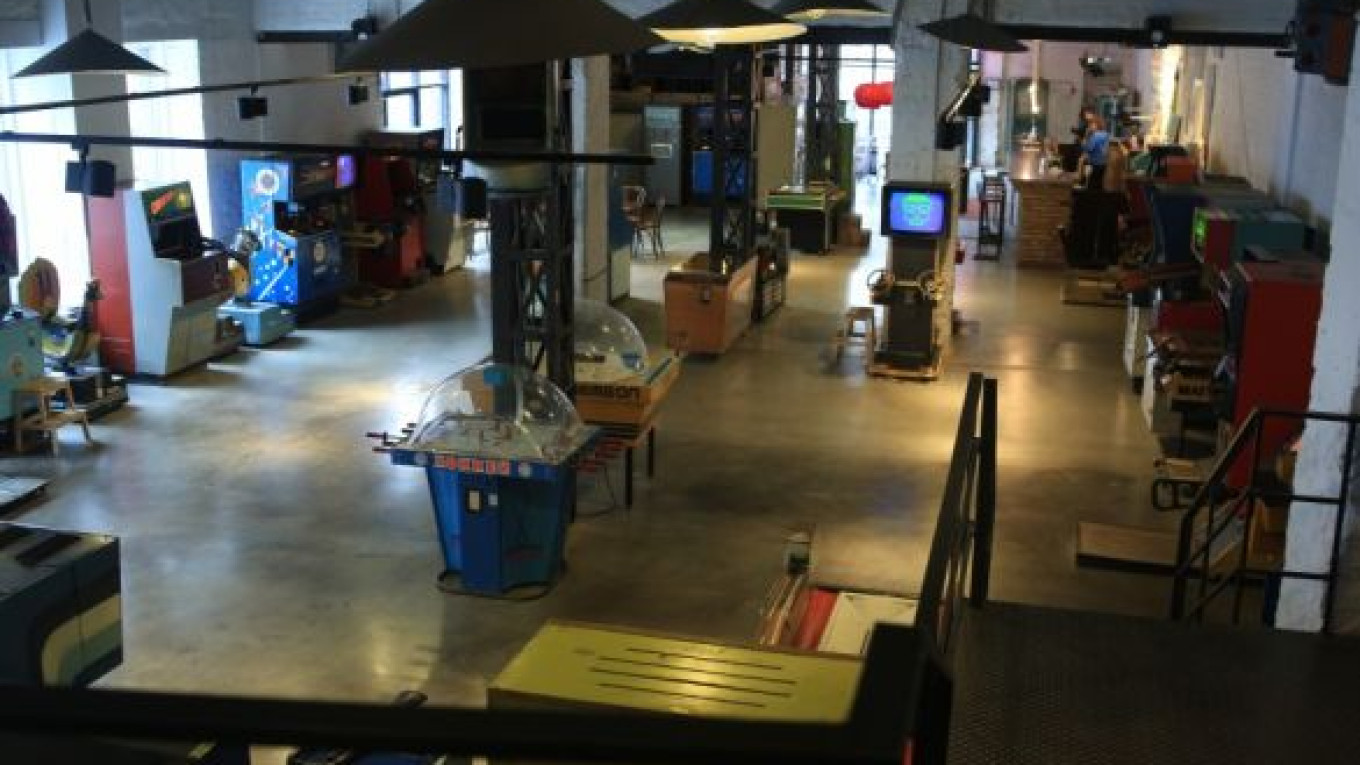Dom 11 Baumanskaya Ulitsa is home to one of Moscow's many museums. However, this is not one of your typical museums. Instead of browsing room upon room of dusty artifacts or priceless inanimate artworks behind a slab of glass casing, a trip here will allow you to admire, touch, play on — and maybe even shout at — the displays.
This is the Museum of Soviet Arcade Machines, home to the largest public and working collection of arcade games produced in the USSR during the mid-1970s.
Founded in 2007, the museum is the brainchild of Aleksandr Stakhanov, Maxim Pinigin and Aleksandr Wugman, who had long dreamed of gathering all their favorite childhood games together in one place.
Collectors of vintage Russian arcade games have tirelessly worked at their restoration.
The project initially arose from a personal interest in finding the most iconic and popular of these games, Morskoi Boi (Sea Battle). They managed to locate it, but ran into a wealth of problems when their attempts to repair it swung into action.
"Because they stopped making these machines in '91, and along with them they stopped making the spare parts, it had become practically impossible to keep them in order. Aside from their nostalgic factor, there isn't really a demand for them."
The consequence of their first endeavor was a little disheartening. "We literally took that first machine to the scrapyard. But after that particular experience, we knew if we didn't collect the arcade machines and put them together in a museum, then they would end up disappearing completely," Stakhanov explained.
The trio made the right decision in the end, and the museum steadily grew to attract a vast array of visitors, old and young, because of the unique universal appeal of the games.
Whole families make excursions to enjoy the machines together; parents who grew up playing them bring along their children, who are equally enthralled. For those interested in the historical manufacture and technical production of the machines, there are even hourly excursions, where the machines are opened up to show visitors what's inside and exactly how they work.
But it's not all fun and games: the machines may be fashionably retro, but with this attribute comes their age. As a result they can break down without much warning, meaning a relentless cycle of repairs in order to keep enough working for the number of visitors.
"On average, three quarters of the machines will be working at any given time. They all break down sporadically and the repair process can often take quite a while. We repair, they break, repair, break, repair, break — it's a constant process," admits Stakhanov.
Indeed, the task of collecting the machines in the first place is also a continual job, and one that can't be done alone. Tip-offs from visitors of the whereabouts of disused machines outside of Moscow are often a big help, with the furthest such acquisition coming from Barnaul in Altai Region, just south of Novosibirsk.
In spite of such a large storage unit, housing many more machines than those currently on display on Baumanskaya, the collection is far from complete.
"We're constantly on the lookout for new machines. This is just the tip of the iceberg … We're far from having the full collection. There are ninety different machines from the 1970s, and we have sourced around fifty, so we still have forty to find! We can most probably find around fifteen or twenty of those, but the rest might be quite tricky," Stakhanov explains.
But as well as sourcing the antique machines, the trio are also interested in bringing them into the 21st century and making them accessible to a wider audience, collaborating with web-designers to ensure that some of the more popular games are available to play on their website, which receives large numbers of visitors daily from all over Russia, and even beyond.
All in all, the museum is a truly unique experience for any visitor, and is clearly born out of a real love for the many machines it houses, and furthermore, a desire to preserve them for the sole sake of letting future generations appreciate as a quirky and kitsch alternative to more modern, mass-produced arcade games which are now imported from outside Russia.
With the Baumanskaya operation and provisional plans for the opening of further outlets in St. Petersburg and Kiev, it seems Stakhanov and the others understand the niche factor of the concept of their museum, but also its potential success as a business model elsewhere. It certainly doesn't look like it's 'game over' for these machines any time soon.
Contact the author at [email protected]
A Message from The Moscow Times:
Dear readers,
We are facing unprecedented challenges. Russia's Prosecutor General's Office has designated The Moscow Times as an "undesirable" organization, criminalizing our work and putting our staff at risk of prosecution. This follows our earlier unjust labeling as a "foreign agent."
These actions are direct attempts to silence independent journalism in Russia. The authorities claim our work "discredits the decisions of the Russian leadership." We see things differently: we strive to provide accurate, unbiased reporting on Russia.
We, the journalists of The Moscow Times, refuse to be silenced. But to continue our work, we need your help.
Your support, no matter how small, makes a world of difference. If you can, please support us monthly starting from just $2. It's quick to set up, and every contribution makes a significant impact.
By supporting The Moscow Times, you're defending open, independent journalism in the face of repression. Thank you for standing with us.
Remind me later.


